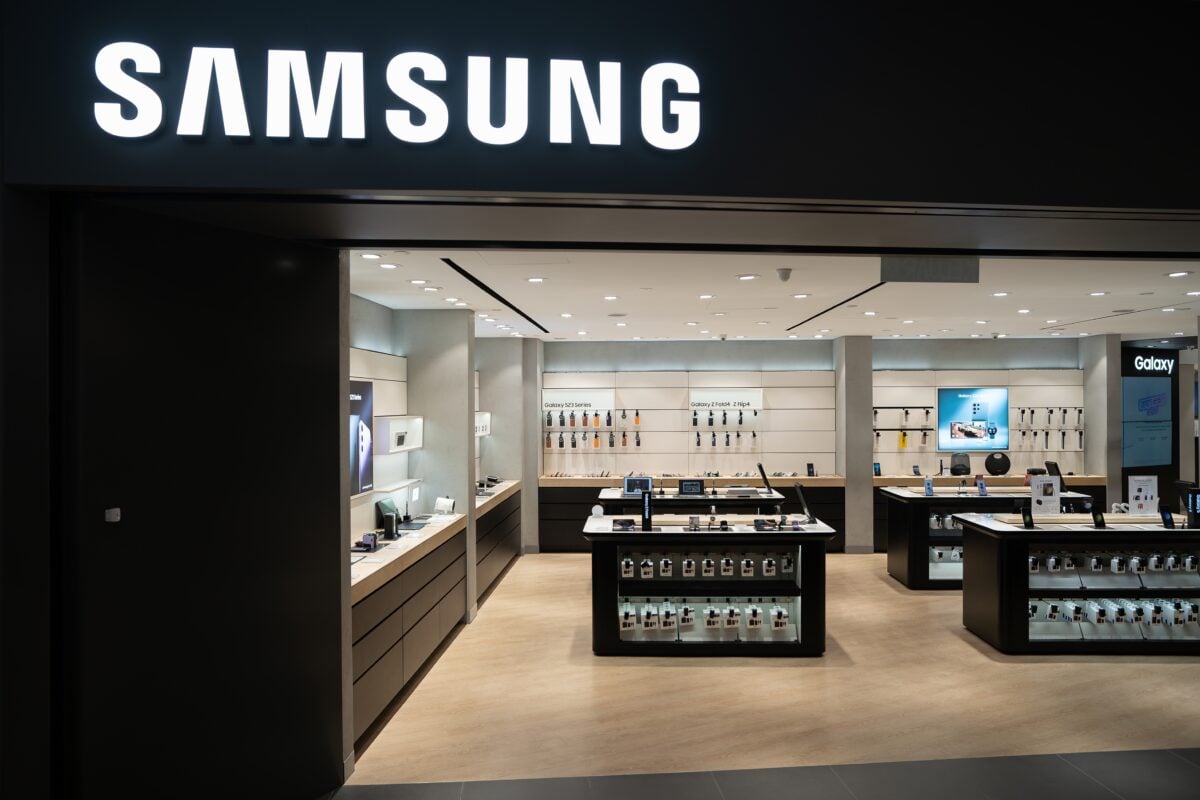TLDRs;
- Samsung will debut its first trifold smartphone at the APEC summit in South Korea later this month.
- The device unfolds into a tablet-sized display with two hinges, offering a new standard in foldable design.
- A commercial launch is expected in late 2025 with limited early supply and a premium price tag.
- Competition from Huawei and Apple intensifies as the foldable market reaches a new innovation threshold.
Samsung Electronics is preparing to unveil its first-ever trifold smartphone later this month, ushering in a new chapter in the foldable phone revolution.
The reveal will take place during the Asia-Pacific Economic Cooperation (APEC) summit in Gyeongju, South Korea, where the company will showcase the futuristic device at a Korean technology exhibition.
Unlike previous foldable models, Samsung’s new trifold device introduces two hinges, enabling users to transform the phone from a compact smartphone into a full-sized tablet. The concept signals Samsung’s ongoing ambition to blur the lines between mobile and computing experiences, offering greater versatility for productivity, entertainment, and creativity on the go.
Although the device will be displayed to attendees, hands-on access will be restricted, underscoring the product’s exclusivity ahead of its anticipated commercial launch in late 2025.
Design Innovation Meets Premium Exclusivity
According to early industry insights, Samsung’s trifold phone will initially roll out in limited quantities, around 300,000 units, with priority given to South Korea and China. A few select international markets, including the UAE, could follow.
Exclusive: A wider launch for Galaxy Z TriFold is confirmed. Read about it in our article linked in the thread below. ⏬ #GalaxyZTriFold pic.twitter.com/rKJxrVcPj1
— SamMobile – Samsung news! (@SamMobiles) October 11, 2025
Pricing is expected to land between $2,500 and $3,500, positioning the device as a halo product for early adopters rather than a mass-market release. This pricing strategy reflects Samsung’s approach to building prestige around innovation while testing consumer appetite for advanced form factors.
The trifold model’s screen is rumored to expand to nearly 10 inches when fully unfolded, making it ideal for multitasking and productivity. This larger display creates opportunities for professionals, creators, and developers to optimize workflows in ways traditional smartphones can’t match.
Foldable Market Competition Heats Up
Samsung’s announcement comes amid intensifying competition in the foldable space. Huawei released its first trifold smartphone in China last year, gaining attention for its pioneering hardware. Meanwhile, Apple is reportedly preparing to enter the foldable device market in 2026, signaling that the next frontier in premium smartphones will revolve around flexible display innovation.
Samsung, the global leader in foldable devices since introducing the Galaxy Fold in 2019, now faces renewed pressure to maintain its technological edge. Its One UI 6 interface, designed to adapt to multiple screen layouts, is expected to play a crucial role in maximizing the trifold’s potential. Features such as Flex Mode, multi-window support, and adaptive layouts will enhance both user experience and developer creativity.
Developers are already being encouraged to design apps optimized for three-panel layouts, paving the way for richer experiences in productivity, content creation, and enterprise collaboration.
The Future of Mobile Computing
The trifold’s debut is not just a hardware announcement, it represents Samsung’s broader strategy to redefine the boundaries of personal technology. As consumers demand more from their devices, Samsung’s innovation pipeline appears focused on bridging the gap between smartphones, tablets, and laptops.
The company’s commitment to premium, AI-powered experiences, seen in recent projects such as its XR headset, Project Moohan, suggests a cohesive push toward next-generation computing ecosystems.
If successful, the trifold could become a key piece in that ecosystem, enabling seamless transitions across mobile, extended reality, and AI-enhanced experiences.





